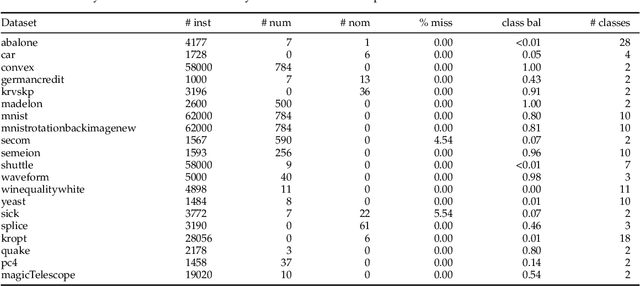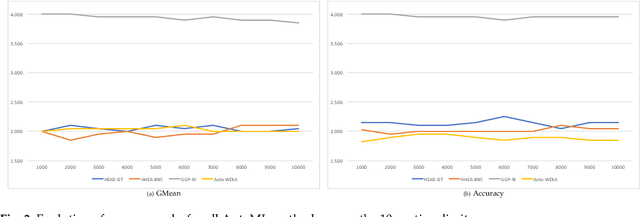An Extensive Experimental Evaluation of Automated Machine Learning Methods for Recommending Classification Algorithms (Extended Version)
Paper and Code
Sep 16, 2020



This paper presents an experimental comparison among four Automated Machine Learning (AutoML) methods for recommending the best classification algorithm for a given input dataset. Three of these methods are based on Evolutionary Algorithms (EAs), and the other is Auto-WEKA, a well-known AutoML method based on the Combined Algorithm Selection and Hyper-parameter optimisation (CASH) approach. The EA-based methods build classification algorithms from a single machine learning paradigm: either decision-tree induction, rule induction, or Bayesian network classification. Auto-WEKA combines algorithm selection and hyper-parameter optimisation to recommend classification algorithms from multiple paradigms. We performed controlled experiments where these four AutoML methods were given the same runtime limit for different values of this limit. In general, the difference in predictive accuracy of the three best AutoML methods was not statistically significant. However, the EA evolving decision-tree induction algorithms has the advantage of producing algorithms that generate interpretable classification models and that are more scalable to large datasets, by comparison with many algorithms from other learning paradigms that can be recommended by Auto-WEKA. We also observed that Auto-WEKA has shown meta-overfitting, a form of overfitting at the meta-learning level, rather than at the base-learning level.
 Add to Chrome
Add to Chrome Add to Firefox
Add to Firefox Add to Edge
Add to Edge